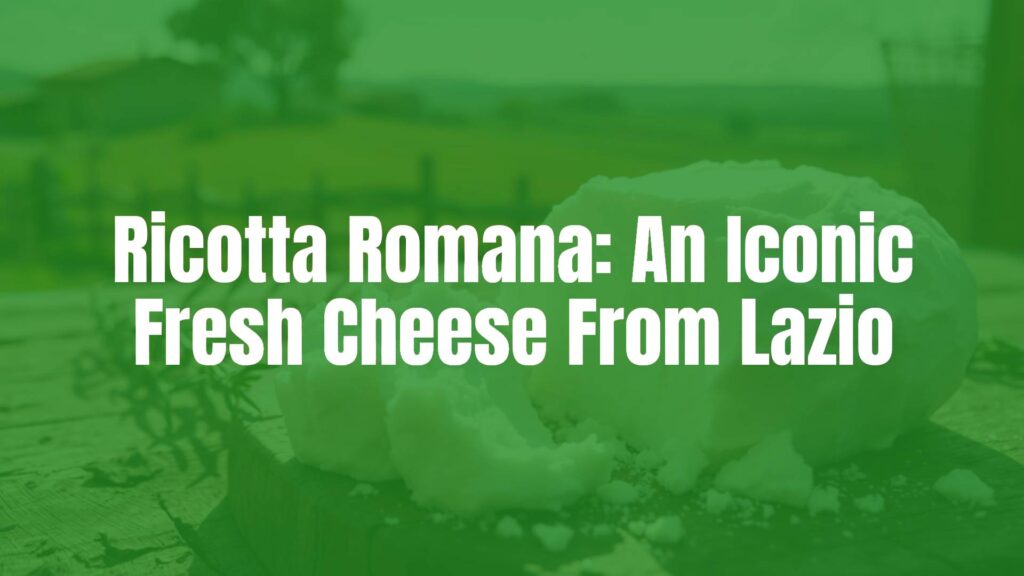Introduction to Ricotta Romana
Ricotta Romana stands among Italy’s most cherished dairy traditions, celebrated for its delicate, creamy texture and subtly sweet flavor. Originating from the Lazio region, and protected by the “Denominazione di Origine Protetta” (DOP) status, Ricotta Romana is a specialty with deep roots in central Italian gastronomy and rural life.
Distinctive Features
Not to be confused with generic ricotta varieties, Ricotta Romana DOP is exclusively produced from the whey of sheep’s milk, primarily derived from local sheep breeds in the Lazio countryside. This results in a cheese that is remarkably light, with a soft, moist consistency and snow-white appearance. Its taste is gentle, slightly milky, and carries a delicate sweetness that distinguishes it from salty or aged cheeses. Unlike firmer cheeses, it is typically enjoyed fresh, within days of production.
Origins and Time-Honored Production
The history of Ricotta Romana stretches back to ancient Roman and even pre-Roman civilizations, as evidence of sheep farming and cheese making abounds in the region’s archaeological records. Shepherds traditionally made this cheese as a nutritious way to use the whey remaining after Pecorino Romano production. The process involves gently heating the fresh whey and allowing the fine curds to form at the surface, which are then collected by hand and placed in characteristic conical baskets. The result is a soft cheese that captures the pastoral essence of its origins.
Cultural Role and Gastronomic Enjoyment
Ricotta Romana’s cultural role is tied to its simplicity and close connection with the rural communities of Lazio. It is a staple ingredient in many regional dishes and a symbol of Lazio’s agricultural identity. At local markets and countryside tables, it often appears as a humble yet essential presence, valued for its nutritional content and versatility.
Culinary Uses and Pairings
This fresh cheese is exquisitely adaptable. It enhances both savory and sweet preparations in Roman and broader Italian cuisine. Among its classic uses, Ricotta Romana is spooned atop toasted bread, combined with honey or seasonal fruit, or folded into pasta dishes such as ravioli and cannelloni. It is a popular filling for Roman-style pancakes (frittelle di ricotta) and traditional cakes like the Cassola Romana—an ancient dessert reminiscent of cheesecake.
For optimal enjoyment, Ricotta Romana should be served at room temperature, ideally on the day of purchase. Due to its freshness, it is rarely aged or preserved. It pairs beautifully with crusty bread, spring vegetables, and drizzles of extra virgin olive oil. Regional white wines or lightly sparkling reds can provide a pleasant contrast to the cheese’s creamy profile.
Regional Variations and Traditions
While fresh Ricotta Romana is the most celebrated, in some rustic contexts, it may be lightly salted or smoked to prolong storage, creating subtle variations in texture and flavor. However, DOP regulations define the authentic Ricotta Romana as a fresh, unsalted sheep’s whey product, upholding its unique character and heritage.
Serving Tips and Appreciating Ricotta Romana
When selecting Ricotta Romana, look for a moist, slightly grainy but cohesive texture, and a bright white color without dryness. To savor its delicate nature, enjoy it simply—spread on bread with a sprinkle of black pepper or a touch of lemon zest, or as a harmonious complement to springtime peas and fava beans. For a more indulgent experience, try it with artisanal jams or fine dark chocolate.
Conclusion
Ricotta Romana encapsulates the essence of Lazio’s pastoral traditions and Italian cheese artistry. Whether enjoyed alone or as part of a classic dish, it remains a testament to the region’s enduring connection between land, tradition, and flavor.

